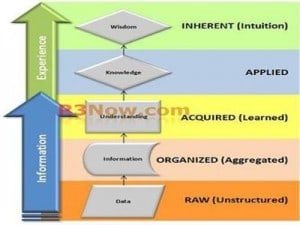Technology integration can take you a long way, but you need people integration for long-term success.
Challenging the Status Quo with New Business Models and Technology Integration
X-as-a-Service models are the future. Whether you are a manufacturer, service provider, content provider, or any other type of business, recurring revenue models are here to stay. As noted by Harvard Business Review (HBR):
Today many industrial companies are beginning to offer their products as services—a move that has major implications for sales and marketing. The goal of salespeople becomes customer success over time, instead of just making the sale. That involves creating “win-win” scenarios for the customer and the company. [FN1]
However, the new business models, primarily digital in nature, also present organizational integration challenges.
“…Fujitsu’s Fit for Digital, found that 52% of global business leaders believe their organization won’t exist in its current form by 2021, as a direct result of digital disruption.” [FN2]
Fujitsu’s 2015 survey spoke with 1,200 C-Suite decision makers across the world who believed digital disruption would radically alter their organizations by 2020.
As of 2023, we continue to see groups such as Forbes predict that digital disruption will continue to drastically impact business.
How many of your competitors are embracing this disruption, altering their organizations for a better tomorrow?
The Keys to the Future Include Collaboration, Team Integration, and Results-Based Metrics
To overcome the fashion world’s slow delivery of trendy products, often outdated almost as quickly as they are developed, fashion retailer Zara took a different approach. Where most fashion retailers’ full cycle times can take months, Zara’s product-to-market cycle time is roughly two to four weeks. Their “design, procurement, manufacturing, and delivery are all organized into teams that work closely with store managers to quicken responsiveness to shifting market trends. Team performance is assessed on the basis of common metrics and incentives that focus on go-to-market speed and rapid lead times.” [FN3]
Zara’s results are no small feat. The entire retail and fashion industry has been under tremendous pressure in the last decade. When you add the additional competitive pressures for online juggernauts such as Amazon, and then Walmart’s online advances, Zara’s results are spectacular. As reported by Reuters, 2018 closed out with 7% growth while the first part of 2019 started with 9%. Online sales grew roughly 41%, while the online channel represents roughly 10% of Zara’s annual business. In an industry sector retrenching, and a typically weak sales category of fashion, and a company who earned 25.34 billion euros in 2018, this is an integration and transformation story worth watching [FN4].
As the ITPro publication from the UK notes both survival and success requires:
“co-creating with other companies to rapidly develop and scale new solutions… and… [i]f your business isn’t set-up to promote teamwork and the sharing of information, you will be losing opportunities to grow. How much of the information that workers are forgetting to share could have led to new business, saved costs or inspired a new idea? After all collaboration is essential for a happier, creative and more productive workforce, and businesses can encourage this through the technology that they introduce.” [FN2 referencing Stuart Sykes, managing director of Sharp UK]
Making the Transition to a People and Technology Integrated Organization
Our enterprise approach to providing holistic integration is more than a simple technology stack– we are long-time practitioners and supporters of SAP’s S/4HANA as the Digital Core. We have invested heavily in specialized solutions to support the collaboration and integration of the new Digital Enterprise. Because of our own journey, we understand the compelling need to combine organizational change and Target Operating Model (TOM) adjustments to these efforts. The best technology and the most thorough integration don’t do much if it is not effectively used.
“Putting connected digital technology in place enables… patterns of collaboration, and in many organizations the collaboration emerges organically. But the unfamiliar nature of this cross-functional collaboration often challenges existing reporting structures and there is no guarantee that it will be successful. Proper change management planning is needed.” [FN5]
Mr. Porter and Mr. Heppelman, along with PTC, through the Harvard Business Review (HBR) have done a thorough and impressive job laying out the many details involved in this type of transition. Rather than simply reframing what they have written, I will provide a few key excerpts (see FN1 below for the link):
Organizational structures are in rapid flux, even among the leading makers of smart, connected products. However, a number of important shifts are becoming evident. The first is more and deeper collaboration and integration between IT and R&D. Over time those units—and others—may start to merge. In addition, companies are beginning to form three new kinds of units: unified data organizations, development-operations groups (or dev-ops), and customer success management units… Ultimately, virtually every traditional function will also need to be restructured, given the dramatic realignment of tasks and roles taking place.
Few R&D organizations… have deep experience in building and managing the cloud-based elements of the technology stack. Now, IT and R&D must integrate their activities on a continual basis. Yet the two functions have little history of collaboration on product development—and in some organizations have a history of animosity… Various organizational models for this new relationship are emerging. Some companies are embedding IT teams within R&D departments. Others are establishing cross-functional product design teams that include IT representation while maintaining separate reporting lines.
A focus on systems, not discrete products. As products become components of larger systems, the customer value proposition broadens. Product quality and features need to be supplemented by interoperability with related products. Companies must decide where to play in this new world: Will they compete at the product level; by offering a family of closely linked products; by creating a platform that cuts across all related products; or by doing all three?…
Partnerships will often be necessary to fill product gaps or connect products to leading platforms. Salespeople will need to be trained to sell with those partners, and incentives will need to accommodate more-complex revenue-sharing models.
The need to coordinate across product design, cloud operation, service improvement, and customer engagement is continuous and never ends, even after the sale. Periodic handoffs no longer suffice. Intense, ongoing coordination becomes necessary across multiple functions, including design, operations, sales, service, and IT. Functional roles overlap and blur. In addition, completely new and critical functions emerge—for instance, to manage all the new data and the new open-ended customer relationships. At the broadest level, the rich data and real-time feedback from smart, connected products challenge the traditional centralized command-and-control model of management in favor of distributed but highly integrated choices and continuous improvement.
The Right Tools and Resources for a Better Future Together
Whether SAP AIF, web services, API’s, workflow, Process Orchestrator, Decision Services, SAP’s Data Hub, Mulesoft, Pega, RPA tools, you have numerous options and possibilities for creating tomorrow’s “composable enterprise.”
If you want to free your business to explore new ways of providing customers with solutions, try out our pre-configured S/4HANA reference tools. The various models and approaches to bundling, subscriptions, recurring revenue, and X-as-a-Service, are already integrated, so your organization can focus on your business and the marketplace.
We also provide a collaborative, integrated business solution engine. With the power of our S/4HANA reference solution, front-end e-commerce through Hybris, and incentivizing your sales group’s customer solution activity with SAP’s Callidus Commissions, we enable business model integration and transformation.
Our solution engineers quickly assess your needs, provide future state solutions, verify the fit, and build a roadmap to the future. At the same time, we perform a rapid organizational assessment, evaluate the desire for different organization models (split, integrated, transactional, transitional, etc.), and build a future state Target Operating Model. This might be a single stage model, or a roadmap with transitional changes along the way.
Contact us today, and see how we can help on this journey to a brighter tomorrow together!
[FN1] Porter, M. and Heppelmann, J. (2015). Connected Products Are Transforming Companies. Harvard Business Review Online. https://hbr.org/2015/10/how-smart-connected-products-are-transforming-companies (retrieved January 21, 2019).
[FN2] Millman, R. (2017). The role of collaboration in digital transformation. ITPro Magazine Online. https://www.itpro.co.uk/collaboration-software/28797/the-role-of-collaboration-in-digital-transformation (retrieved January 23, 2019).
[FN3] Michael Ringel, M., Taylor, A., and Zablit, H. (2015). The Rising Need for Innovation Speed. Boston Consulting Group. https://www.bcg.com/publications/2015/growth-lean-manufacturing-rising-need-for-innovation-speed.aspx (retrieved January 21, 2019).
[FN4] Reuters Market News Staff (2018). Zara owner Inditex full-year profit up 7 pct. https://www.reuters.com/article/inditex-results/zara-owner-inditex-full-year-profit-up-7-pct-idUSL8N1QV5A5 (retrieved January 25, 2019).
[FN5] Wainewright, P. (2015). Collaboration is the secret of success in digital transformation. diginomica online. https://diginomica.com/2015/12/08/collaboration-is-the-secret-of-success-in-digital-transformation/ (retrieved January 23, 2019).






